|
Ameraucanas have become my favorite breed to use in Olive Egger Breeding programs - and likely one of my favorite breeds over all.
Ameraucaunas (alongside Cream Legbars) are renowned by colored egg breeders because of their homozygous Blue Egg genes - meaning they carry two copies of those blue egg genes and are guaranteed to pass one of those genes down to offspring. They also always pass down those adorable muffs and pea comb in that first generation It’s common for production markets like feed stores, hatcheries and backyard breeders to mistakenly refer to Easter eggers as Ameraucanas. To give those manufacturers the benefit of the doubt, their mislabeling could be due to the fact that the birds theyre referring to also have that Ameraucana Muff and comb. But this is simply because Ameracaunas are used so frequently in egg color projects acrossed the board. What separates Olive Eggers from Easter Eggers is the mindfulness of choice of birds used to create the stock - and those homozygous blue egg genes. First Generation Olives should originate from a Marans (or welsummer or barnevelder - but we want the darkest brown genetics available) and a Homozygous Blue layer (Legbar or Ameraucana). To keep these Olive Lines “Olive”, from that F1 generation we breed back either to another Olive, Marans or True Blue Layer. When we stay within this breeding that’s how we get our later generations of Olive Eggers. There are too many potential unknown variations in Easter Eggers for them to be considered for use within Olive Breeding Projects. If you’re concerned about whether your bird is an Easter Egger or an Ameraucana - knowing the SOP for Ameraucanas is the solution. It will be helpful to know some information that the APA has provided us about the Standards for Ameraucanas. Recognized Ameraucana colors include Black, Blue, Splash, Blue Wheaten, Buff, Brown Red, Self Blue (Lavender), Silver, Wheaton, and White. Breed traits include a pea comb, full tails, muffs and beards, black legs, no ear tuffs, and white skin. Self Blue or Lavender is a newer recognized color variety and was only recognized in 2020 by the APA ***Edited to say that Splash had also been approved as an accepted color variety of Ameraucana
0 Comments
I collected a great representation of what you can expect color wise from various Olive Egger Backcrosses.
This picture features eggs layed by: A first generation Olive Egger (F1) - her parents were a true blue laying (homozygous for blue egg genes) hen underneath a Marans rooster. A Back Crossed Olive Egger (BC1) / Crossed back to a Marans Rooster - Mom was an F1 Olive Egger who was bred underneath a Marans Rooster. A Back Crossed Olive Egger (BC1) / Crossed back to an Ameraucana Rooster - Mom was an F1 Olive Egger who was bred underneath an Ameraucana Rooster. Personally, I love the variety of colors that comes from various breeding set ups with Olives. In my experience, the way to keep Olive lines “pure” - because let’s be honest, they’re a glorified mutt breed - I am mindful to only use True Blue Layers, Marans and Olives whose genetics I know, in my Olive Breeding programs. Within those parameters, I give myself lots of room to “paint” with genetics. And let’s not forget that traits like Speckles and Heavy Blooms are also typically passed down genetically One of the most common genetics topics in comments and in messages on my page is clarification on egg color potential from future offspring - So I’ve created these charts to offer you as a visual representation of simple Olive Egger / Colored Layer genetics and what you might expect from their offspring.
Please feel free to save and share these images wherever you want - As I know this is a popular topic across the chicken keeping community. If you’re interested to dive even deeper, there are endless videos and posts here on this page as well as on my Tik Tok channel in the “Olive Egger” and “Chicken Genetics” Playlists. There’s a link in my bio for that channel or I’m searchable as BohemianFarmstead (don’t ask why it’s different, it’s a long story ) The Silver Homestead https://silverhomestead.com I also host a Patreon that is home to exclusive content, one on one support, gives members access to a Patrons only Facebook community, as well as exclusive hatching egg giveaways and priority listing in any wait lists I run (and more) Membership is less than $10 per month - Those interested can join here: www.Patreon.com/BohemianFarmstead I appreciate yall and your support, and I love getting to connect with you no matter which platform! The fact that so many of you now, when messaging about “Olive Egger” hatching eggs, refer to them as “Dirty River Water Eggs” brings me so much indescribable joy.
In a world full of Moss Eggers and Sage Eggers I am beyond proud to be the cultivator of Dirty River Water Eggs One thing that I’ve noticed within the Olive Egger community is that sometimes we don’t really have any continuity to how we label specific generations. There is a general understanding when it comes to first and second generation olives, and also olives who are back crossed to Marans - But the extent of olive breeding pairs extends well beyond those generations. As we head into hatching season I want to take a second to share with you here what you can expect specifically from labels on my own olive eggs. And also how my breeding pens are set up. First, let’s establish Olive Egger Abbreviations! First Generation Olive Egger (F1) happens when you breed a true blue layer to a dark brown layer (and is the only generation guaranteed to give you green eggs) Second Generation Olives (F2) happens when you breed two F1 olives together (and gives you variations of greens, teals and browns) Third Generation Olive (F3) … it gets a little muddy here, but I believe in these later generations of Olives happen when you use the oldest generation on your breeding pair as the generational starting point - so if you breed an F2 Olive to any younger generation of Olive you’re still breeding into your third generation because of that F2… makes sense right? So Third generation olives come from second F2s bred back to Olive eggers. I apply this logic when labeling and moving any further down the Olive Breeding Path. Back Crosses can either be back crossed back to dark brown layers or back to true blue layers. First Generation Back Crosses (BC1) happen when you breed an olive Egger back to either a true blue layer or to a dark brown layer. In those dark brown breedings those offspring will give you a 50/50 chance for green/brown eggs - in the true blue back cross, those offspring will absolutely throw some variant of green/teal/blue eggs. Second Generation Backcross (BC2) happens when you take those BC1 offspring and breed back to A dark brown or true blue layer again. Third Generation Backcross (BC3) I’ve actually never seen labeled… But I would follow the same logic as with the F3 generation. Although I think by this point most of us just call these offspring “Later Generations”. So now… I have four breeding pens that will produce Olive Egger offspring that are set up as follows. Pen 1 Splash F1 Olive Rooster over: BC1 hens (green eggs labeled F3) BC 2 hen (green eggs labeled F4) Pen 2 Silver Ameraucana Rooster & Blue Ameraucana Rooster over: Cuckoo and Black Copper Marans Hens (brown eggs labeled F1) Brown Laying Back Crossed Hens (Brown eggs labeled F1) BC1 hens (green eggs labeled BC2 Amer) Pen 3 Black Copper Marans Rooster over: Cream Legbar Hens (blue eggs labeled F1 black) ***These chicks will be sex linked Pen 4 Blue Copper Marans Rooster over: Blue Wheaten Ameraucana Hens (blue eggs labeled F1 blue) BC1 Olive Hens (green eggs labeled BC2 blue) I hope this offers clarity, not confusion |
ArchivesCategories
All
|
© Mojo Homestead LLC 2025
Images © Noell Smith 2014-2025 All rights reserved
Images © Noell Smith 2014-2025 All rights reserved

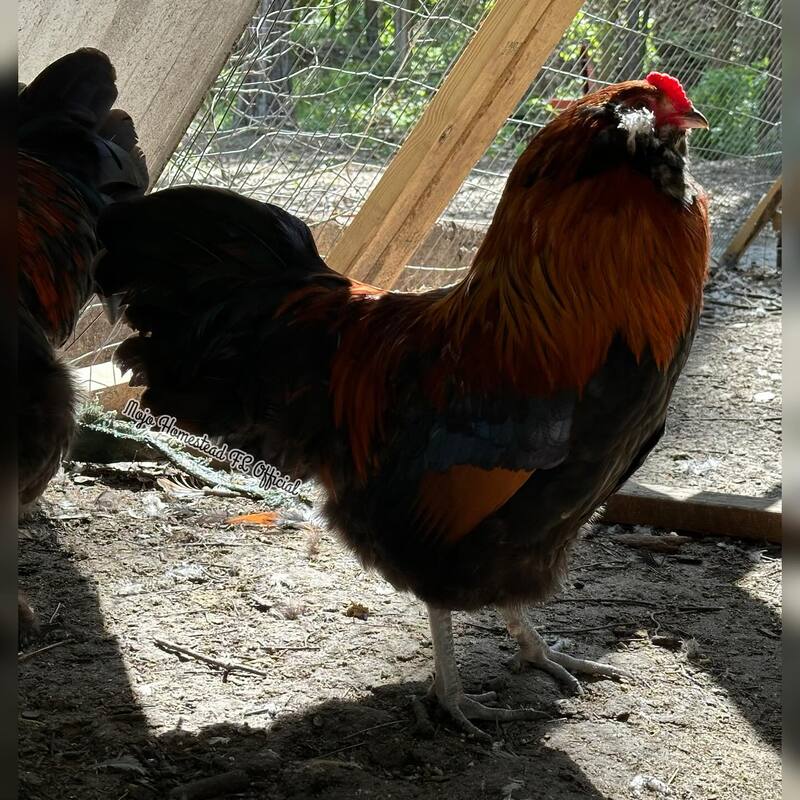

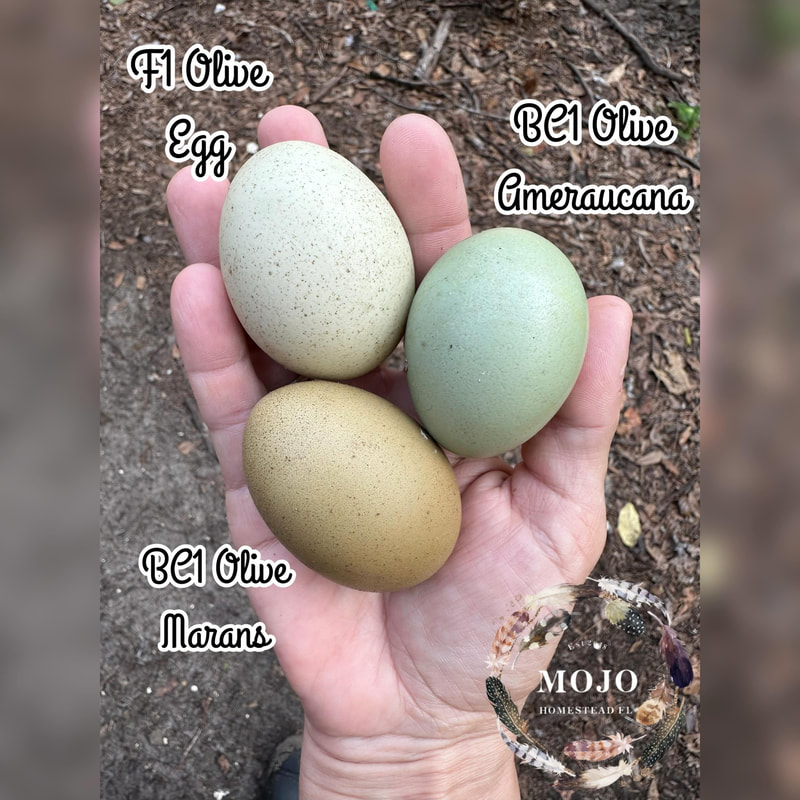

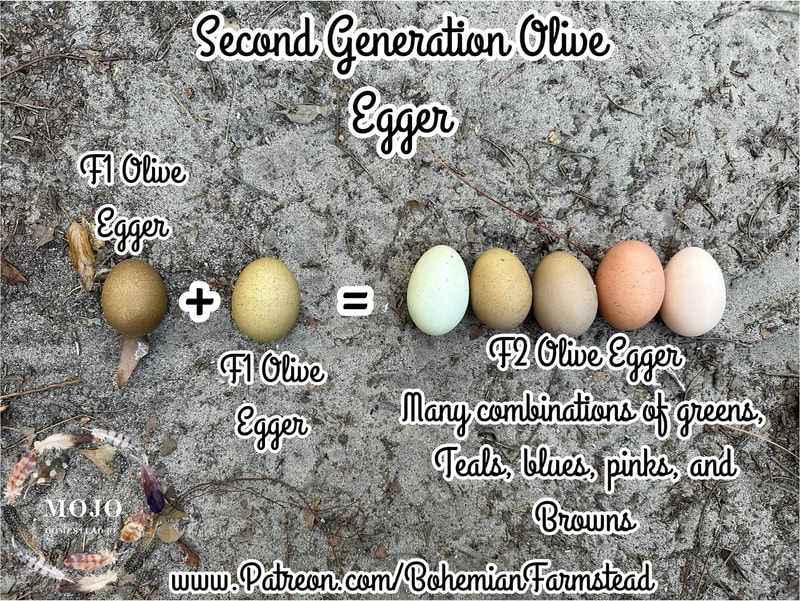
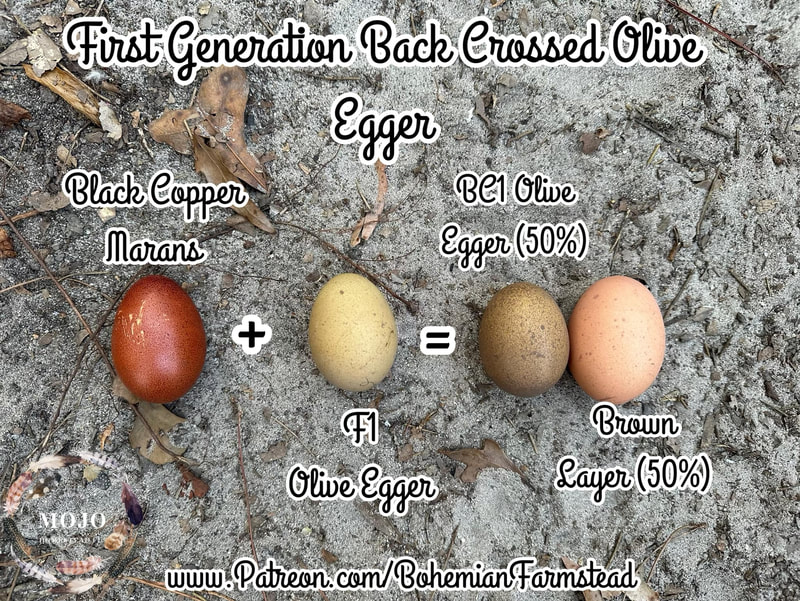
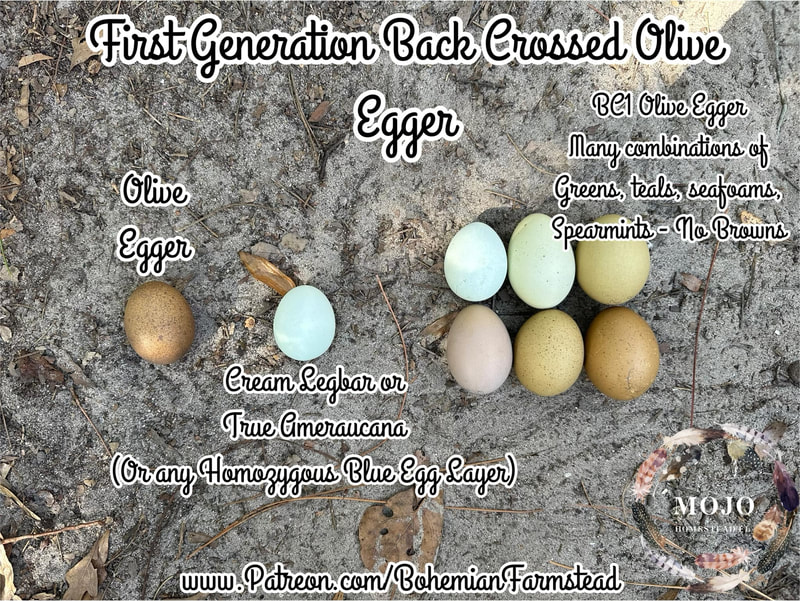

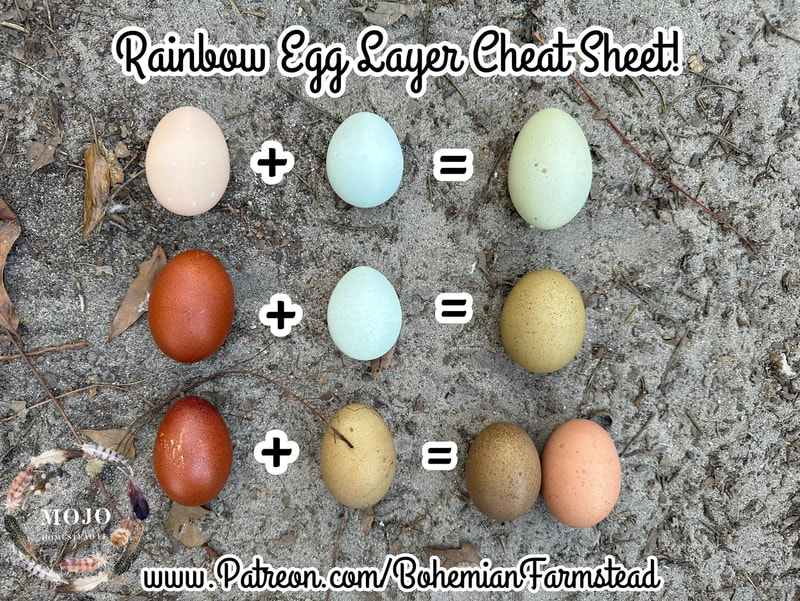
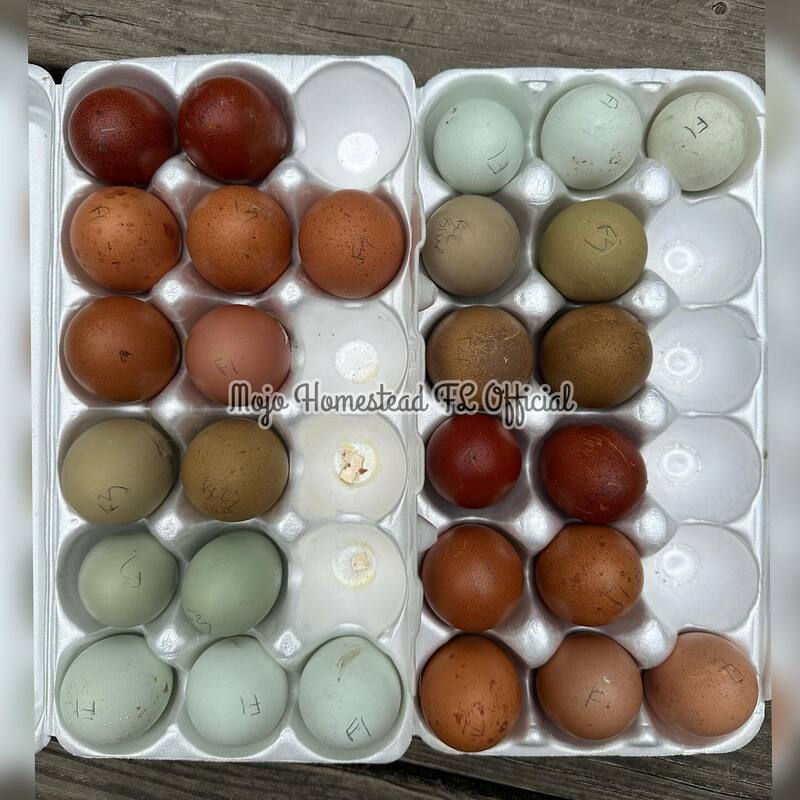
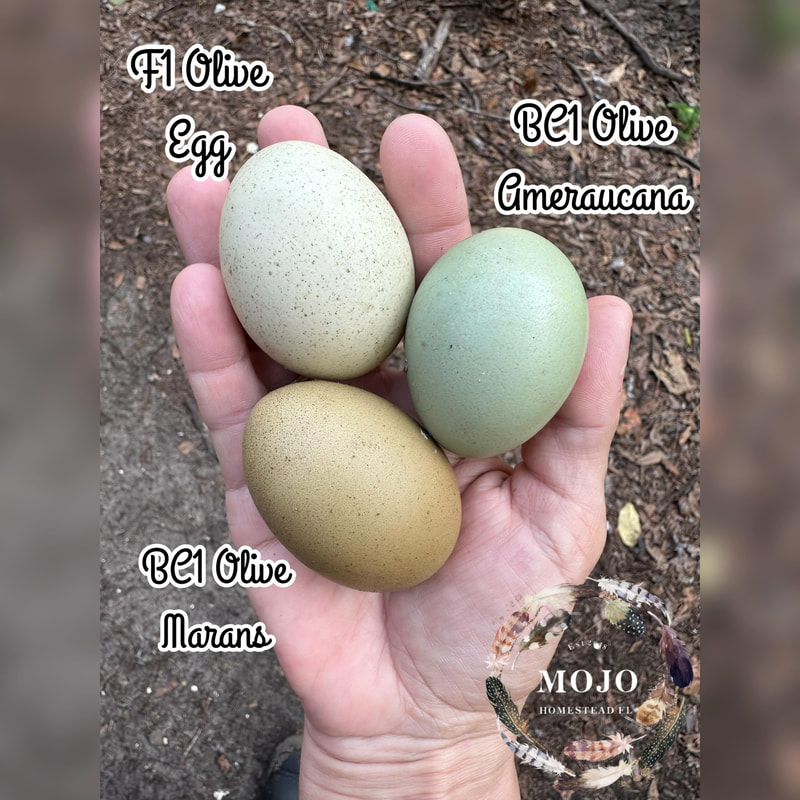
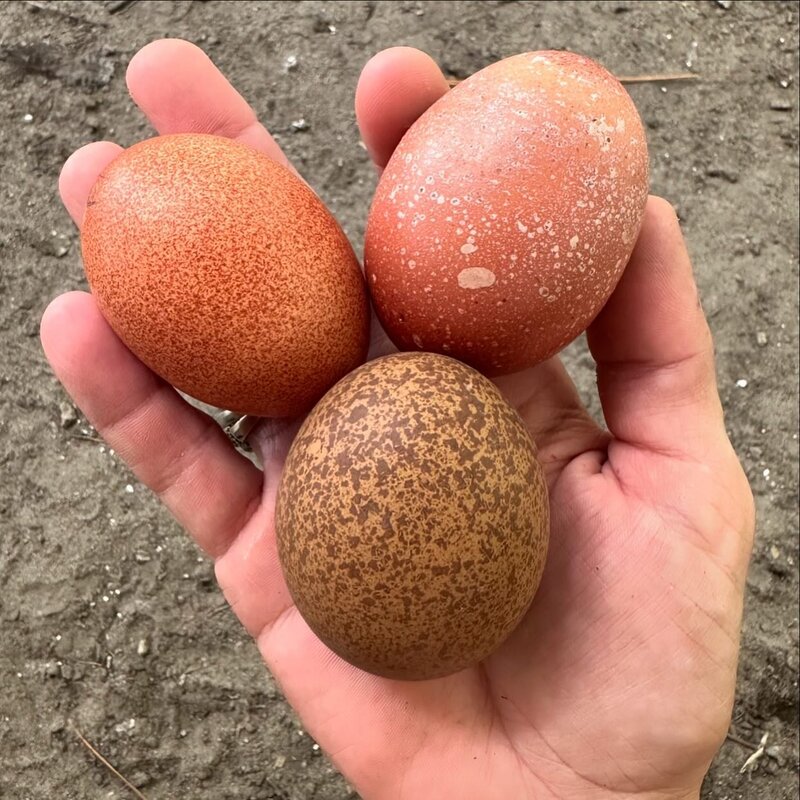
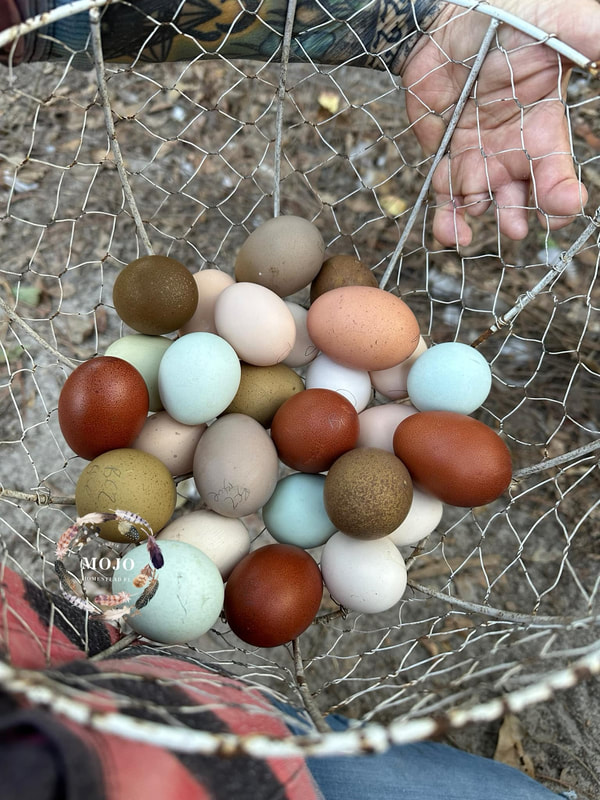
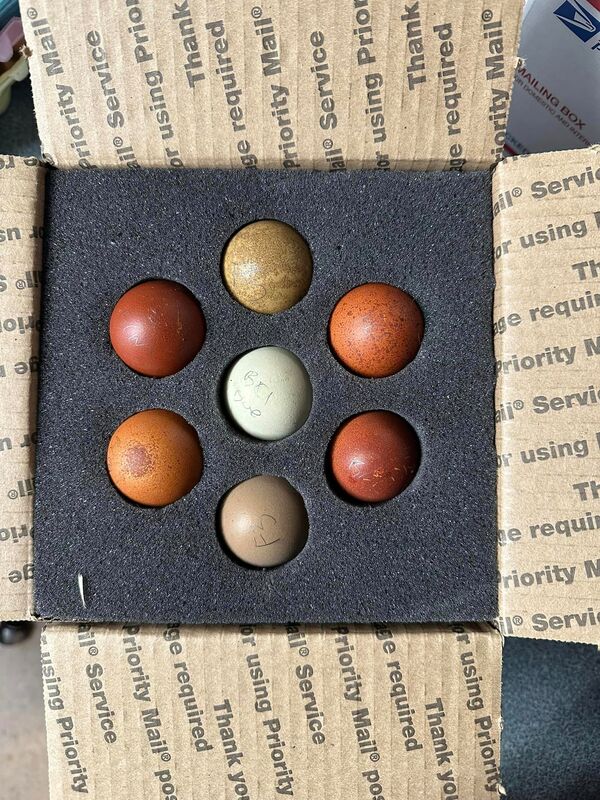
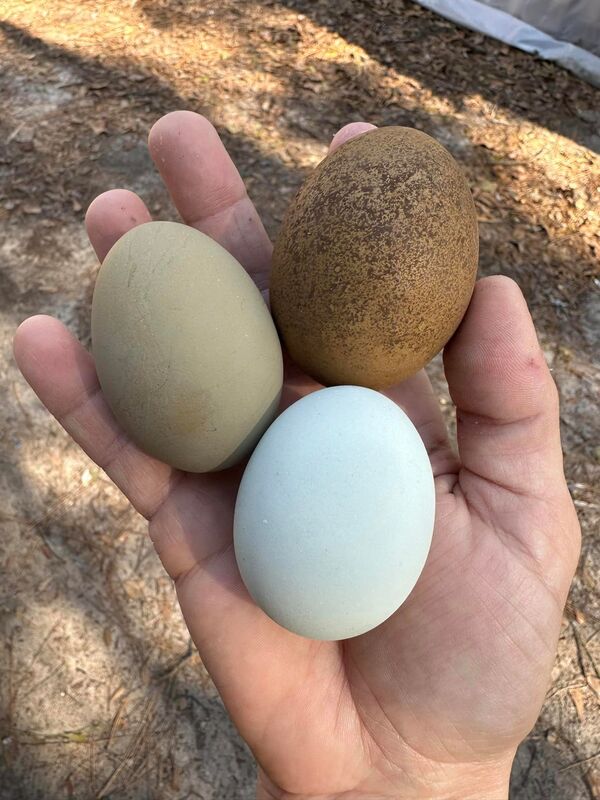
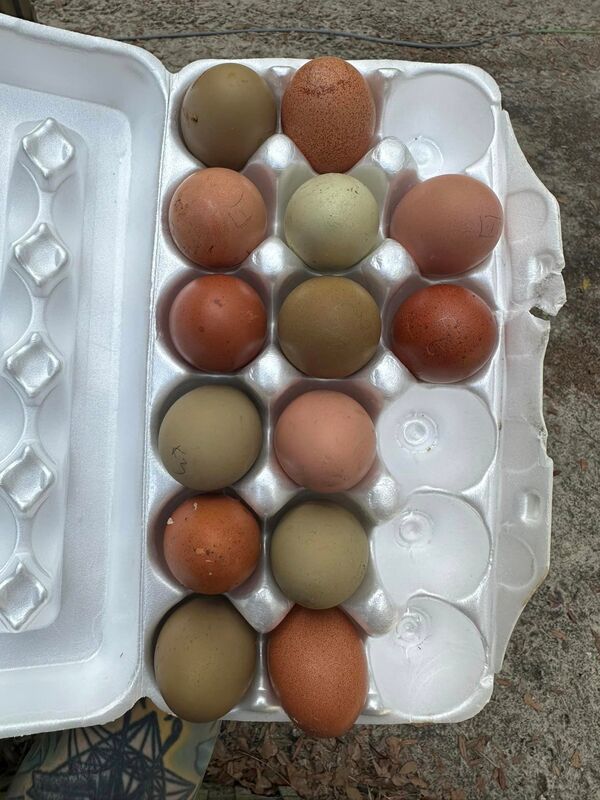

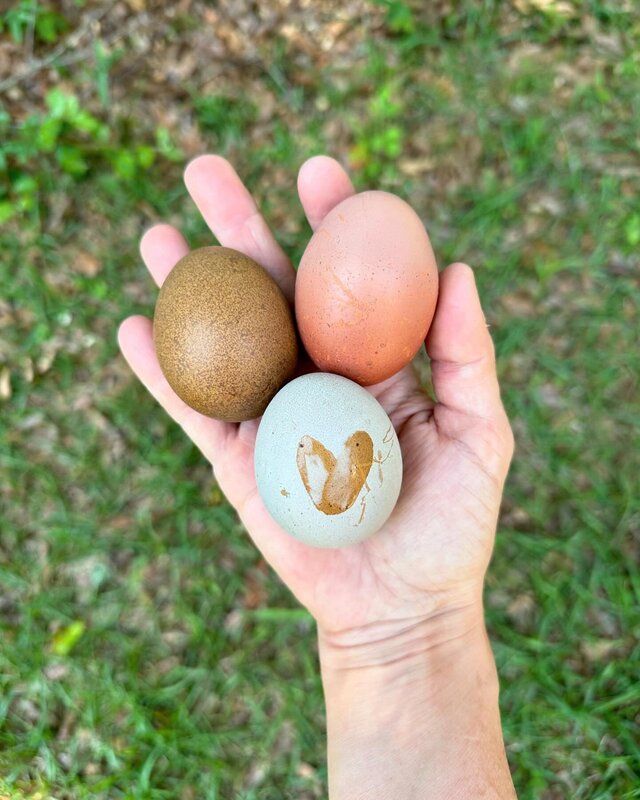
 RSS Feed
RSS Feed